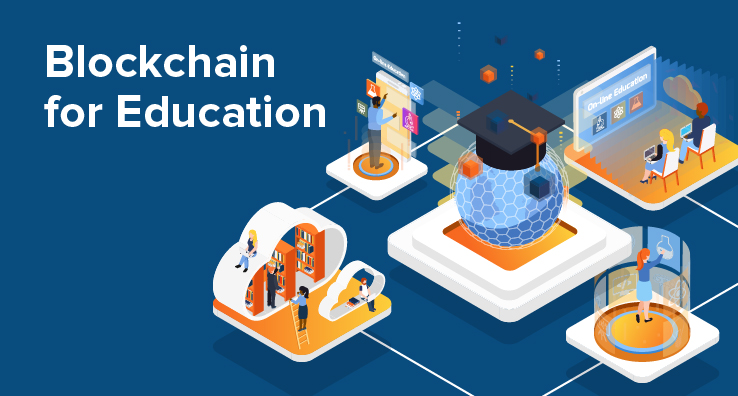
When most people think of blockchain (if they think of it at all), they consider it linked to cryptocurrencies and Bitcoin, which is where the technology originated. However, the core characteristics of the technology – its immutability and distributed nature – render it ideal for many applications beyond financial applications. Of particular importance to academic administrators is in the area of educational credentialing, where blockchain can be harnessed to enhance the authenticity, security, and efficiency of academic records.
Ensuring Authenticity and Security of Academic Records
Sadly, many individuals are less than honest about their credentials or job history. Accredible, a digital credentialing service, reported that an Automatic Data Processing analysis of 2.6 million self-submitted background checks showed that 23 percent of individuals had falsified credentials or license details and 41 percent of individuals had lied on their resumes about their education. Blockchain technology is one way that schools can help ensure academic authenticity through:
• Immutability and Trust: Blockchain’s core feature of immutability makes it an ideal solution for maintaining academic records. Once data is entered into a blockchain, it cannot be altered or deleted, ensuring that the records remain tamper-proof. This level of security builds trust among employers and institutions, who can be confident that the credentials they are reviewing are genuine.
• Cryptographic Security: The use of cryptographic algorithms in blockchain adds an additional layer of security. Each credential can be encrypted and securely stored on the blockchain, preventing unauthorized access and ensuring that only those with the appropriate permissions can view or verify the records.
Streamlining and Reducing Costs
One of the main benefits of many technologies is the ability to improve accuracy and efficiency of mundane, necessary tasks. So it is with blockchain. The issuing and sharing of academic credentials occurs every day between K12 schools, colleges, employers, and others. Blockchain can help streamline those efforts and reduce costs for all involved through:
• Automated Processes: Blockchain can automate the process of issuing credentials through smart contracts. These are self-executing contracts with the terms of the agreement directly written into code. When a student completes a course or degree, a smart contract can automatically issue a digital credential, reducing the time and effort required for administrative processes.
• Ease of Sharing: Blockchain allows for easy and secure sharing of credentials. Students can have a digital wallet that stores all their academic credentials, which they can share with employers or other educational institutions with a simple click. This eliminates the need for physical copies and reduces the chances of documents being lost or forged.
• Reduced Administrative Load: By automating the issuance and verification of credentials, blockchain significantly reduces the administrative burden on educational institutions. This allows educators and administrators to focus more on teaching and less on paperwork.
• Cost-Effective Focus: The automation and security features of blockchain can lead to significant cost savings. By reducing the need for intermediaries and minimizing fraud, institutions can lower their operational costs and improve overall efficiency.
Enhancing Student Privacy and Control
Schools throughout the country are struggling to protect a vast amount of student data - from standardized test scores through demographic information - that can be collected and mined from a growing number of apps and technology platforms. Helping students maintain more control over their academic data is an advantage of blockchain credentialing through:
• Ownership of Data: One of the significant benefits of using blockchain for educational credentialing is that it gives students ownership of their data. Unlike traditional systems where institutions hold student records, blockchain allows students to control who has access to their credentials. They can decide when and with whom to share their academic achievements.
• Consent and Transparency: With blockchain, every access and transaction is recorded, providing complete transparency. Students can see who accessed their records and for what purpose, ensuring that their privacy is maintained and that their data is used ethically.
Facilitating Lifelong Learning and Accumulation of Credentials
As K12 educators, we hope we are fostering a love of lifelong learning. As our students reach adulthood, they will hopefully want to pursue personal or career-related learning opportunities. Blockchain technology can help foster this ongoing learning process as well as track achievements and accomplishments.
• Continuous Learning: In today’s fast-paced world, continuous learning and skill development are crucial. Blockchain supports lifelong learning by providing a comprehensive and easily accessible record of all credentials earned over a lifetime. Whether it’s a degree, a professional certification, or a short course, everything can be documented and accessed from a single platform.
• Ease of Sharing: Blockchain allows for easy and secure sharing of credentials. Students can have a digital wallet that stores all their academic credentials, which they can share with employers or other educational institutions with a simple click. This eliminates the need for physical copies and reduces the chances of documents being lost or forged.
• Interoperability: Blockchain technology is inherently interoperable, meaning it can work seamlessly with different educational systems and platforms. This interoperability ensures that students can accumulate credentials from various institutions and platforms without any compatibility issues.
Conclusion
Blockchain technology holds immense potential to transform educational credentialing by ensuring authenticity, enhancing security, and streamlining processes. By giving students control over their data and supporting lifelong learning, blockchain can create a more efficient, transparent, and student-centric educational ecosystem. As institutions and educators continue to explore and adopt this technology, the future of educational credentialing looks promisingly secure and efficient.


